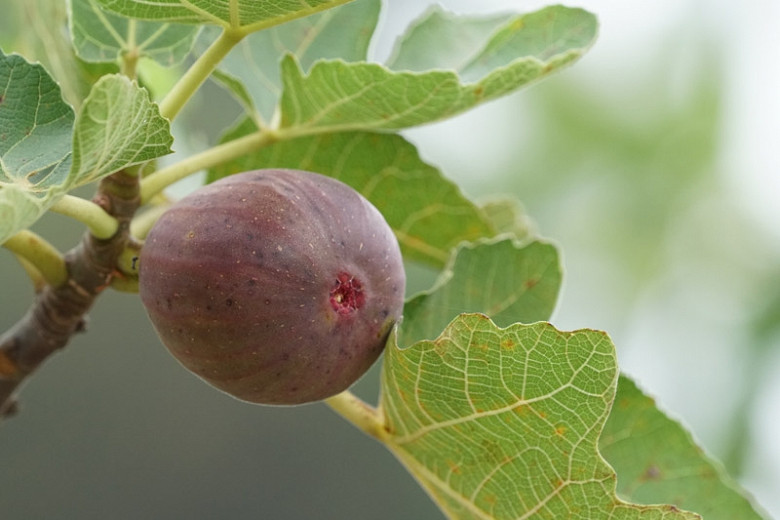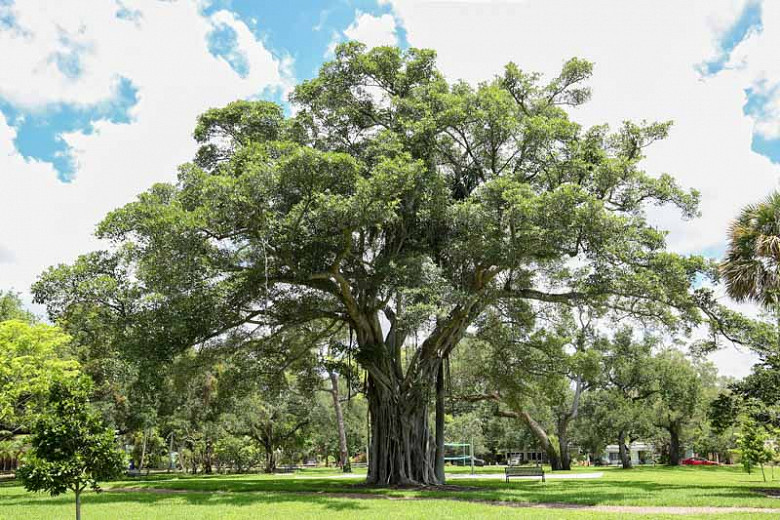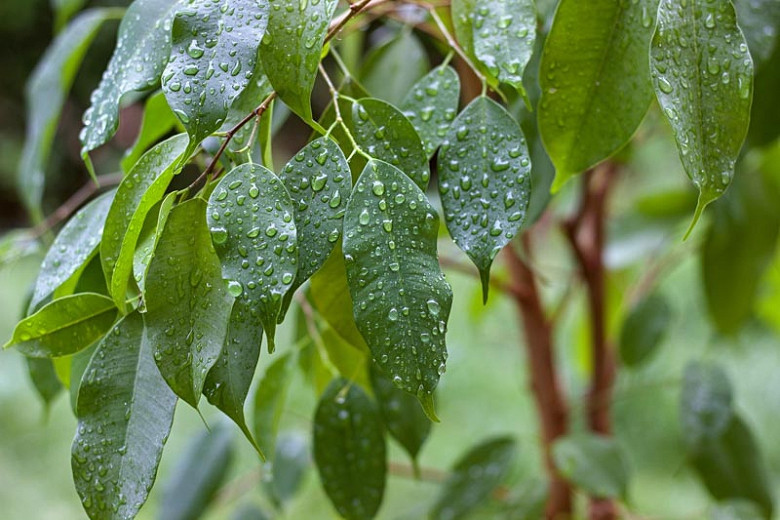Ficus carica Celeste (Fig)
Noted for its cold-hardiness, Ficus carica 'Celeste' (Fig) is a deciduous multi-branched shrub adorned with large, thick, deeply lobed leaves, up to 1 ft. long (30 cm). Insignificant flowers form inside a hollow receptacle in spring that, when mature, enlarges and becomes fleshy. It becomes an edible, small to medium-sized fruit, at first green, but purplish-bronze when ripe. As surprising as it may be, we actually eat the bloom, which is hidden inside the receptacle that encloses the flower. The fruit ripens in late summer or fall on new wood. Prized for its sweet, smooth rich flavor, the fig is luscious with a rose-colored flesh. As the figs mature, you’ll need to harvest them daily by clipping them from their stems. They dry well on the tree in warm climates. The figs are excellent for eating fresh. Thanks to their 'closed eye', they resist insects entering the fruit and spoilage. This plant is self-fertile and does not need cross-pollination. Plant it for foliage interest, fruit, and as a conversation piece.
- Grows up to 7-10 ft. tall and wide (210-300 cm).
- A full sun to part shade lover, this tree is easily grown in organically rich, moist, well-drained soils. Site in a protected location (against a warm wall or fence) with annual root mulch.
- Fig trees are fast-growing and flexible enough to be easily espaliered against walls. This plant may also be grown in a pot and brought indoors.
- Virtually pest and disease free.
- Remove 1/4 to 1/3 of older branches in early spring.
- Propagate by hardwood cuttings.
- Ficus carica species is native to Western Asia, Mediterranean Region.
- Toxic to dogs, toxic to cats, toxic to horses.
- Research is underway to determine which cultivars of fig become invasive.
- Find where Ficus carica species is invasive in the United States.
- Discover beautiful U.S. native plant alternatives.
Requirements
| Hardiness | 6 – 9 |
|---|---|
| Climate Zones | 4, 5, 6, 7, 8, 9, 11, 12, 13, 14, 15, 16, 17, 18, 19, 20, 21, 22, 23, 24, H1, H2 |
| Plant Type | Fruit, Shrubs |
| Plant Family | Ficus |
| Exposure | Full Sun, Partial Sun |
| Season of Interest | Spring (Mid,Late)Summer (Early,Mid,Late)FallWinter |
| Height | 7' – 10' (210cm – 3m) |
| Spread | 7' – 10' (210cm – 3m) |
| Water Needs | Average |
| Maintenance | Average |
| Soil Type | Chalk, Loam, Sand |
| Soil pH | Alkaline, Neutral |
| Soil Drainage | Moist but Well-Drained, Well-Drained |
| Characteristics | Showy, Fruit & Berries |
| Attracts | Birds |
| Garden Uses | Wall-Side Borders |
| Garden Styles | City and Courtyard, Informal and Cottage, Mediterranean Garden |






